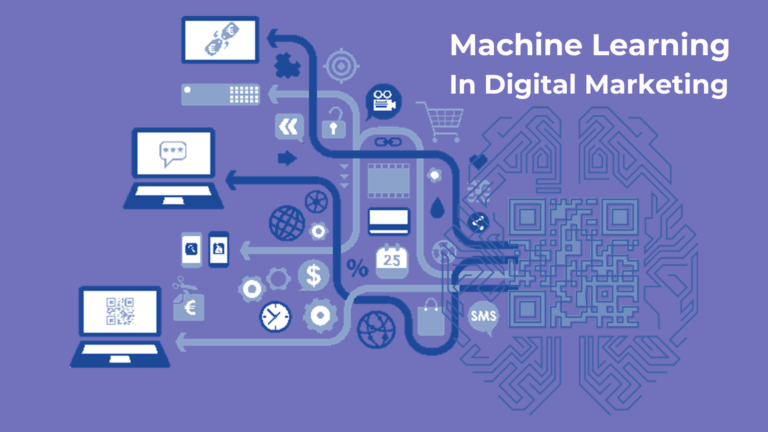Date of publication:
30 May. 24The Impact of Augmented Reality on Marketing and Advertising
The development of new technologies constantly changes the surrounding world, creating additional opportunities for all areas of life, including business. Augmented reality (AR) has become an integral part of recent years, successfully applied in medicine, education, entertainment, and other spheres of human activity. The influence of AR on marketing and advertising deserves special attention. This new technology allows for radically new ways for brands to interact with consumers, including with digital content in the real world, creating a unique and engaging experience. In this direction, the technology opens up new opportunities for creating effective and impressive campaigns, attracting the attention of the target audience.
What is Augmented Reality
To effectively use any tool, it is necessary to clearly understand what it is and how it can be used. Augmented reality (AR) is an innovative technology that combines real and virtual worlds to create a unique user experience. The technology is based on the ability to visually expand reality by adding virtual objects and information to the surrounding world.
The functioning of AR relies on the use of devices such as tablets, smartphones, or special AR glasses, allowing for the perception of augmented elements in real-time. This is the main difference between AR and virtual reality — instead of completely replacing the real world, it merely augments it. This creates unique opportunities for interaction with the surrounding environment.
Key Principles of Augmented Reality
The functioning and interaction of augmented reality (AR) with the real world are based on a number of key principles that define it.
Key Principles of Augmented Reality:
- Integration of Virtual and Real Reality: The goal is to create a unified and unique perception by merging virtual elements with the real world.
- Location and Orientation Tracking: Uses geolocation, gyroscopes, and accelerometers to track the orientation and movement of the device.
- Interactive Interaction: Achieved through touch sensors, gestures, and voice input.
- Computer Vision: Utilizes image processing to recognize and analyze objects in real-time.
- Projection of Virtual Objects: Integrates virtual objects into the real environment with correct perspective and lighting.
- Creation of 3D Models: Develops 3D models of the environment for more accurate placement of virtual objects.
- Data Privacy Protection: Ensures the confidentiality of data and prevents information leaks.
- Combining Realities: Merges virtual objects with real objects in the environment.
- Universality and Accessibility: AR applications should be available on various devices, from smartphones to specialized glasses.
These principles form the foundation for the development of AR technologies and applications, ensuring the seamless integration of virtual and real worlds to enhance user perception and interaction with the environment.
Explanation of Technical Aspects of AR
Augmented reality is a technology that brings virtual elements into the real world. It is characterized by several key technical aspects.
Significant Technical Aspects:
- Energy-Saving Methods: Used to extend the battery life of devices.
- Performance Optimization: Necessary for the efficient operation of AR applications and minimizing energy consumption.
- Feedback: Provided through sound and vibration to enhance user interaction with the virtual world.
- Wireless Technologies: Wi-Fi, Bluetooth, and 5G are used for data transmission and interaction with remote servers or other devices.
The technical aspects of augmented reality are constantly evolving. Innovations in this field include advanced recognition methods, enhanced display efficiency, and more accurate location tracking.
How AR Influences Brand Perception
The use of augmented reality (AR) significantly impacts various aspects of marketing, including brand perception. AR provides consumers with engaging and unique experiences. Studies conducted by specialists have determined that augmented reality can influence brand perception through:
- Consumer Engagement. Providing interactive and unique opportunities for consumers to engage with the brand. Creating impressive campaigns and AR applications capable of capturing attention and sparking consumer interest.
- Innovation and Technological Appeal. Implementing AR showcases the brand’s willingness and ability to follow the latest technological trends.
- Brand Recognition. Increasing brand recognition through unique AR experiences, leading consumers to associate the brand with exciting virtual or visual impressions.
- Emotional Connections. Virtual stories illustrated by AR help create emotional connections between the consumer and the brand, making their interaction more personal and memorable.
Positive Aspects of Brand Perception through AR
Overall, successful use of AR can create a positive brand perception, highlight its innovation, and build deeper connections with consumers. These goals are achieved through the support of marketing campaigns, retail sales, training, and education.
- Marketing Campaigns. Using AR in advertising and marketing campaigns makes them more effective and appealing. For instance, brands can create AR applications that allow scanning products, obtaining additional information, or showcasing virtual product demonstrations.
- Retail Sales Support.AR can be used to create unique and personalized virtual try-ons or product displays, enhancing the shopping experience and encouraging repeat purchases.
- Educational Purposes. When a brand offers services or products that require training, AR can be utilized for educational purposes. This approach improves the perception and understanding of the brand as educational and attentive to consumer needs.
By leveraging AR, brands can enhance their marketing efforts, provide innovative experiences, and establish stronger relationships with their audience, ultimately leading to a more positive brand perception.
Features of Perceiving Advertising Through AR
Perceiving advertising through augmented reality (AR) comes with unique features that make this media format more engaging and attractive to consumers. The perception of advertising through AR has several key characteristics:
- Interactivity: AR advertising allows users to interact with virtual objects in the real world, creating a deeper and more immersive experience.
- User Personalization: AR technologies enable the integration of personalized elements into advertisements, taking into account the interests and preferences of individual users.
- Modernity and Innovation: Using AR in advertising gives a brand a modern and innovative image, which can attract the attention of the target audience.
- Visual Appeal: Elements in AR advertising can be visually appealing and attention-grabbing, helping to make the advertising message stand out among other formats.
Advantages of Advertising with AR
Using augmented reality in advertising offers numerous advantages compared to traditional advertising formats:
- Contextual Relevance. AR advertising can use the user’s location to provide contextual information, making the ads more relevant and useful.
- Emotional Impact. AR ads can have a powerful emotional impact on the audience by allowing interaction with virtual objects or characters in the real world. This can evoke positive emotions in consumers and strengthen their connection to the brand.
- Enhanced Perception. The combination of reality and virtuality, where virtual objects can be seen in the context of the real environment, enhances the perception of three-dimensionality and realism in advertising.
- Accessibility Across Devices. AR ads can be displayed on various devices, such as smartphones, tablets, and AR glasses, making them more accessible to a diverse audience. Additionally, AR advertising campaigns can create unique visual effects that contribute to better brand recall.
- Measurable Effectiveness. Compared to traditional formats, the effectiveness of AR advertising can be more accurately measured, as it provides data on user interaction with virtual objects. However, it is important to consider that the effectiveness of AR advertising depends on the quality of the content, its relevance, and its ability to meet the needs of the end user.
How AR Enhances the Effectiveness of Marketing Messages
Beyond offering advantages in advertising, augmented reality (AR) can significantly enhance the effectiveness of marketing messages. This is achieved by adding creative visual elements to the brand’s perception.
Here are some ways AR helps improve marketing messages:
- Expanding Audience Reach: AR-supported applications attract new users and retain the attention of the current audience. Innovative and interesting messages through AR become viral and can be shared among users.
- Personalized Interactions: AR can create the impression of individualized contact with the brand, allowing for closer connections with consumers.
- Integrating Gamification: AR can make marketing messages more engaging by incorporating game elements. Quizzes, quests, and other game formats can deepen engagement and encourage user participation.
Opportunities to Increase the Effectiveness of Marketing Messages with AR
Augmented reality enhances the effectiveness of marketing messages in several ways, including product visualization, allowing potential buyers to see them in their real environment or in action. For example, brands can create AR applications that enable virtual placement of furniture in the home.
AR also boosts effectiveness through interactivity, engaging users in interaction with marketing messages, making them more attractive and impressive. Users can rotate 3D models of products, participate in virtual try-ons, and interact with virtual campaign elements.
Additionally, AR can be used to provide extra information about products or services. Using image recognition technology, interactive elements can be created to offer additional facts, video reviews, or recommendations. AR also helps create unique campaigns that capture attention. This can include virtual giveaways, animated posters, or virtual artificial objects appearing in the real world.
How AR Helps in Creating Personalized Advertising Campaigns
Augmented Reality (AR) can be a crucial element in creating personalized advertising campaigns. Firstly, AR allows users to interact with advertisements in real-time. By viewing products in 3D, consumers can change their color or size before making a purchase, creating a deeper level of engagement and personalization.
Beyond online commerce, the implementation of AR can enhance in-store experiences by providing potential customers with individualized virtual experiences, such as seeing how products will look in their home. Personalized AR visual effects can be added to advertisements based on user preferences, such as animations that match the customer’s interests or reflect their individual style.
Methods for Creating Personalized Campaigns
AR can also be utilized through mobile devices to place virtual objects or information in the real world. This technology can be used to create personalized tags around physical locations or products, providing additional information or offers. Additionally, social media platforms can use AR to create personalized filters, effects, or games related to specific products or brands, spreading personalized advertising.
During events or campaigns, AR can be used to create personalized markers. For example, with mobile devices, users can scan specific objects to receive personalized offers or information.
Challenges and Issues of Augmented Reality in Marketing
Despite its high creative potential, AR has its own challenges and issues. Currently, AR technologies are limited by computational power and technical resources. Many existing AR devices can be inconvenient for prolonged use, limiting their practical value. AR also introduces new challenges in the areas of security and data privacy.
The collection, accumulation, and use of information about the real world and users can raise concerns about privacy violations. Additionally, a lack of diverse and attractive content can hinder the widespread adoption of the technology. The absence of unified, widely accepted standards also complicates the implementation of AR, as different devices and developers may use different technologies, leading to market fragmentation.
Prospects for the Development of Augmented Reality in Marketing
Despite certain challenges in implementing AR, this innovative technology has vast potential for use in marketing. For example, with the increase in hardware performance and the integration of AI sensors, more realistic and interactive AR applications will be created. Additionally, combining AR with smart technologies will help develop more intelligent and adaptive systems for better user interaction. The development of interfaces and the improvement of input and output methods, such as gestures, speech recognition, and neuromorphic algorithms, will enhance the usability of AR technologies. However, for the successful development of augmented reality, it is necessary to address issues related to privacy, security, and ethics to create a sustainable and attractive user environment.
Evaluating the Results and Effectiveness of AR Advertising in Practice
Evaluating the results and effectiveness of AR advertising involves various aspects, and its success depends on the campaign’s goals, audience, content, and context of use. Several key factors are critical for assessing the effectiveness of AR advertising in practice:
- User Engagement. This is measured by the time users spend interacting with AR content. Prolonged engagement indicates the success of the campaign, as does the frequency of interaction. Repeat visits can signify its attractiveness.
- Brand Impact. Conducting surveys among the target audience can determine the degree of increased brand awareness and the associations formed with the brand due to AR advertising.
- Conversions and Direct Response. This involves assessing the direct response, specifically the number of actions taken after interacting with AR advertising. Analyzing conversion funnels helps evaluate the effectiveness of AR advertising at each stage.
- Social Reaction and Virality. This is reflected in how actively users share AR content on social media. It also involves analyzing user reviews and comments, which can provide valuable insights into their perceptions and experiences.
- Analytics and Metrics — Quantitative and Qualitative. These help assess the effectiveness of AR advertising, including costs and ROI. This involves comparing the expenses of creating and promoting AR content with other types of advertising. Additionally, the return on investment (ROI) is evaluated, and the economic efficiency of the AR campaign is calculated considering the costs and results achieved.
- Technological Stability and Quality of AR Applications. Ensuring technological stability and the quality of AR applications prevents technical issues from negatively impacting user experience. By conducting a comprehensive analysis of these factors, one can determine the effectiveness of AR advertising and how well it aligns with the company’s marketing goals.
The Bottom Line
Augmented Reality (AR) is significantly transforming the landscape of marketing and advertising, offering new ways to engage with consumers. AR technology enables the creation of more interactive and personalized experiences, enhancing customer engagement and satisfaction.
Using AR in marketing campaigns allows brands to stand out from competitors by offering unique and memorable experiences. Interactive advertising materials, virtual fitting rooms, and products with enhanced features help increase customer loyalty and drive sales.
Analyzing data collected from interactions with AR content allows marketers to better understand consumer behavior and preferences, leading to more precise marketing strategies and improved user experiences.
In the future, the development of AR technology and its integration with other innovations, such as artificial intelligence and machine learning, will open new horizons for creative and effective marketing solutions. Companies that actively harness the potential of augmented reality will be able to strengthen their market positions and create strong emotional connections with their customers. Augmented Reality is a powerful tool in the arsenal of modern marketing and advertising, capable of transforming brand-consumer interactions and paving new paths for growth and development.



